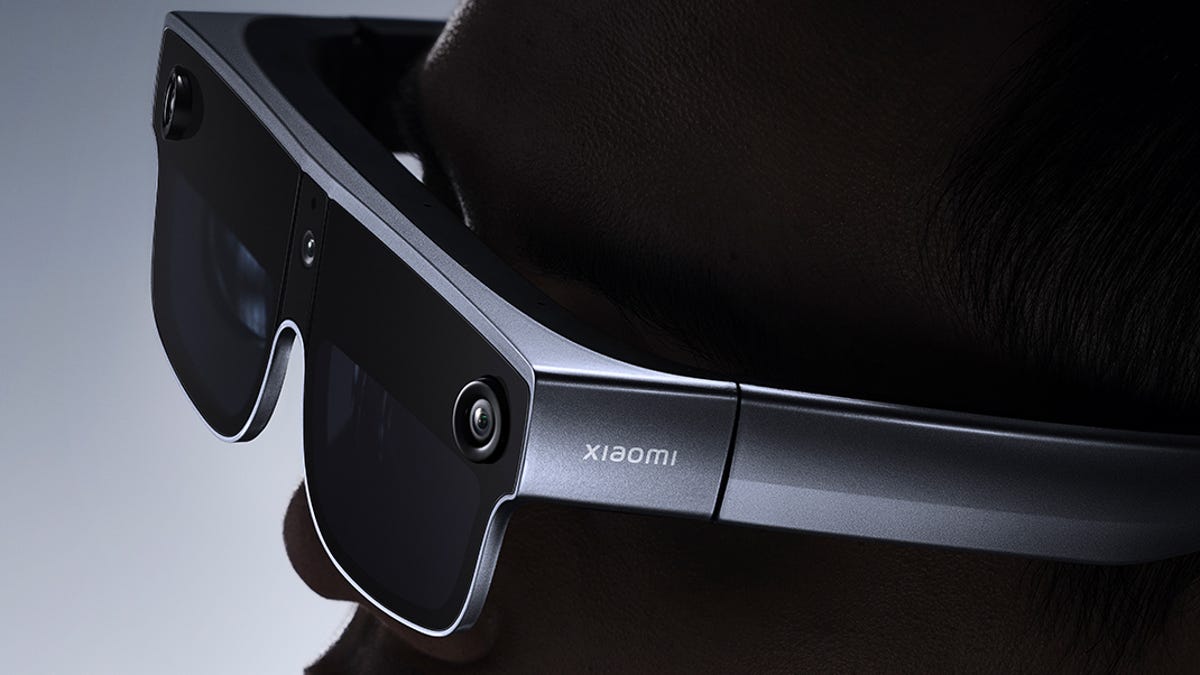Xiaomi AR Glasses Add Micro OLED and Dimming Lenses
The dimming-lens glasses have hand tracking and Micro OLED displays.

The Xiaomi AR Glass Discovery Edition glasses can dim their lenses like sunglasses.
Will you wear AR glasses everywhere you go in the future? That's debatable. But manufacturers are continuing to make them. Xiaomi's AR Glass Discovery Edition, announced at the Mobile World Congress trade show in Barcelona, is another attempt to figure out the territory. The camera-equipped AR glasses look like mysterious AR sunglasses, and they can dim their lenses on the fly.
Qualcomm announced a new AR glasses-focused chipset design last year that was aimed at having smaller smart glasses work wirelessly with nearby phones. Qualcomm's tech is rolling out for manufacturers that have a glasses-and-phone product relationship already set up, since the glasses and phone both need to be certified for Qualcomm's Snapdragon Spaces software in order to work.
Xiaomi's new glasses don't use that new chipset. Instead, they're using a higher-performance XR2 chip, much the upcoming RayNeo X2 glasses TCL showed off at CES in Las Vegas earlier this year. (The chip's also in the Meta Quest 2 and several other standalone VR headsets.) They work with Qualcomm's Snapdragon Spaces software, because Google hasn't yet created a native environment for AR glasses in Android.
A big step ahead to the new era of wireless AR. #MWC23 #ConnectedFuture
— Xiaomi (@Xiaomi) February 27, 2023
Introducing Xiaomi Wireless AR Glass Discovery Edition, utilizing distributed computing with forward-thinking innovation in inter-device compatibility. #InnovationForEveryone pic.twitter.com/q6RRgPlkZv
Xiaomi's glasses look more like futuristic visors, and use Micro OLED displays, promising a "retina-level" resolution level at 58 pixels per degree (this measures the density of pixels rather than the total pixel resolution). One unique thing they add is a set of lenses that change opacity to go dark for better AR viewing, which sounds similar in concept to the Magic Leap 2. The glasses use hand tracking and gesture tracking for controls, using the glasses' external cameras, but they can also pair with a phone and use a phone's touchscreen like a trackpad too.
Google, Samsung and Qualcomm have already announced a future XR partnership, which could lead to glasses and phones that are better integrated with Google's Android platform. Apple's expected mixed-reality headset could do the same for the iPhone over time. Xiaomi's glasses are early to the party, in that sense.
Qualcomm is driving the progress between glasses and phones in the meantime, and that's mostly happening on a carrier-by-carrier and device-by-device basis. In some ways it feels similar to the early days of smartwatches, before Google and Apple entered the game. The immediate future will likely still see a process of gradual evolution, and it's unclear what software will work for these glasses, or how well they'll fit on your face or eyes. We do know they have prescription lens inserts, but I've found them a mixed bag for my vision when I've tested them in the past.

